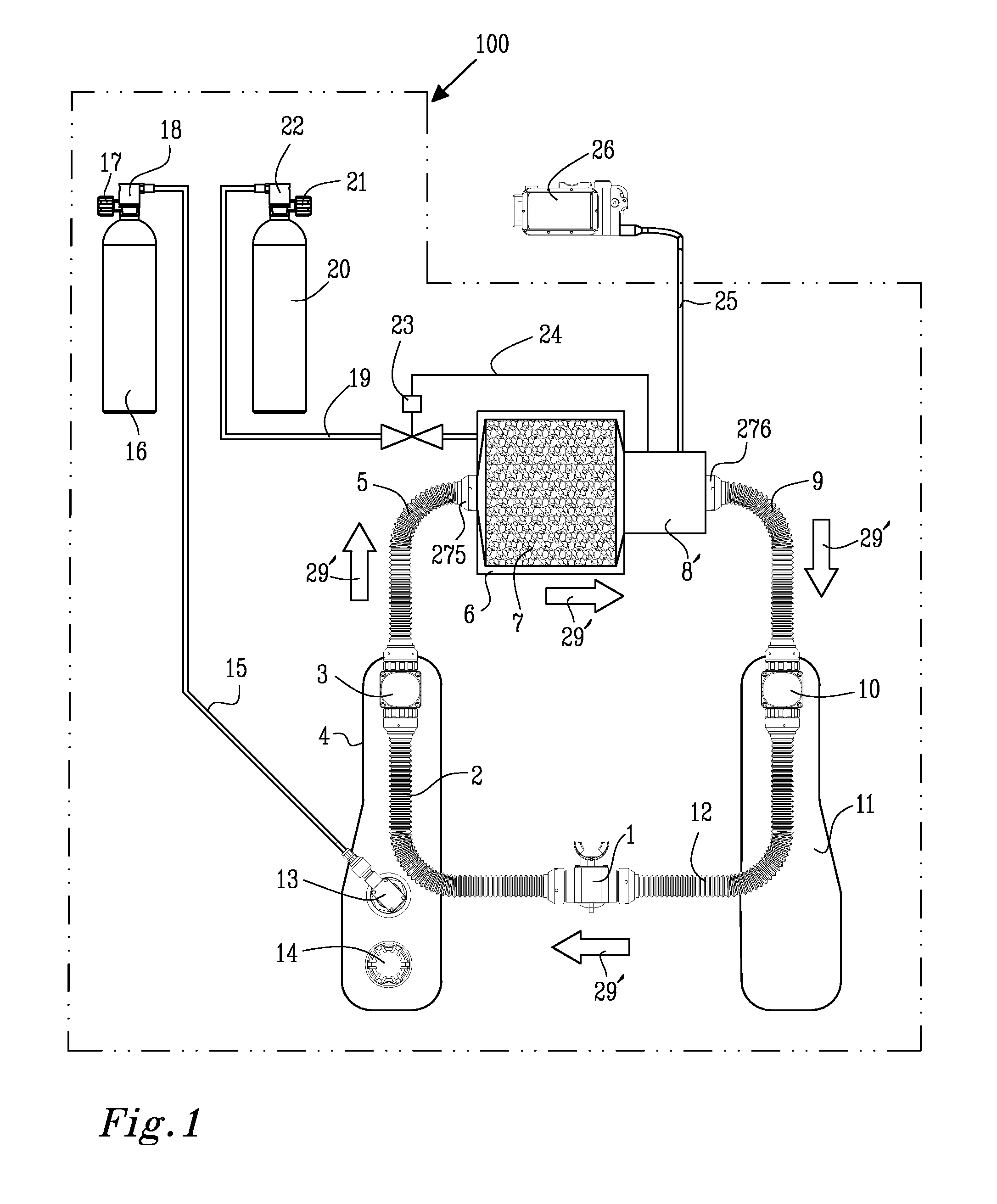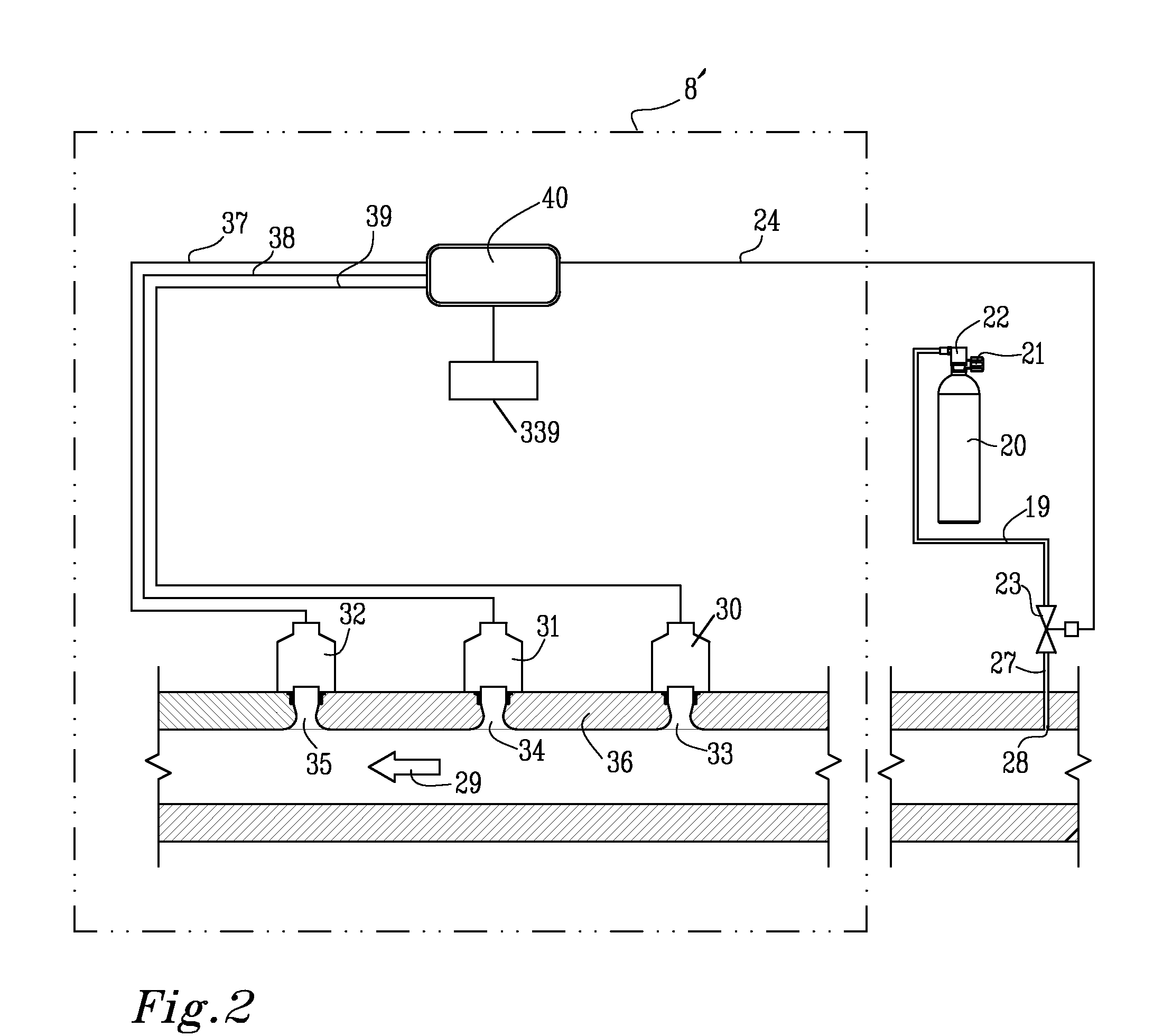Auto calibration / validation of oxygen sensor in breathing apparatus
a technology of oxygen sensor and breathing apparatus, which is applied in the direction of respirator, operating means/releasing devices of valves, underwater equipment, etc., can solve the problems of increased risk of hyperoxia-induced seizure and other “oxygen toxicity” symptoms, increased risk of decompression sickness, and increased volume of gas injected
- Summary
- Abstract
- Description
- Claims
- Application Information
AI Technical Summary
Benefits of technology
Problems solved by technology
Method used
Image
Examples
Embodiment Construction
Basic Breathing Apparatus
FIG. 1 shows in schematic mode of an exemplifying breathing apparatus 100 in the form of a typical modern CCR architecture, e.g. as elaborated in the patent document U.S. Pat. No. 4,964,404 (Stone). The general operation of such a CCR is as follows: the user breathes into a mouthpiece 1 that contains checkvalves (not shown) that enforce the flow of gas in a preferential direction, as schematically indicated by the arrows 29′ in FIG. 1. The expelled gas (from exhalation) travels down breathing hose 2 and into junction block 3, which permits passage of the gas into a flexible bladder 4 known as a “counterlung”. In advanced CCR designs (e.g. as in the patent document by Stone cited above) two counterlungs are used—an exhalation counterlung 4 and an inhalation counterlung 11 such that each has a volume equal to about half the exhalation volume of the diver. As the exhalation counterlung 4 fills the gas then continues through junction block 3 and through breathin...
PUM
 Login to View More
Login to View More Abstract
Description
Claims
Application Information
 Login to View More
Login to View More - R&D
- Intellectual Property
- Life Sciences
- Materials
- Tech Scout
- Unparalleled Data Quality
- Higher Quality Content
- 60% Fewer Hallucinations
Browse by: Latest US Patents, China's latest patents, Technical Efficacy Thesaurus, Application Domain, Technology Topic, Popular Technical Reports.
© 2025 PatSnap. All rights reserved.Legal|Privacy policy|Modern Slavery Act Transparency Statement|Sitemap|About US| Contact US: help@patsnap.com



